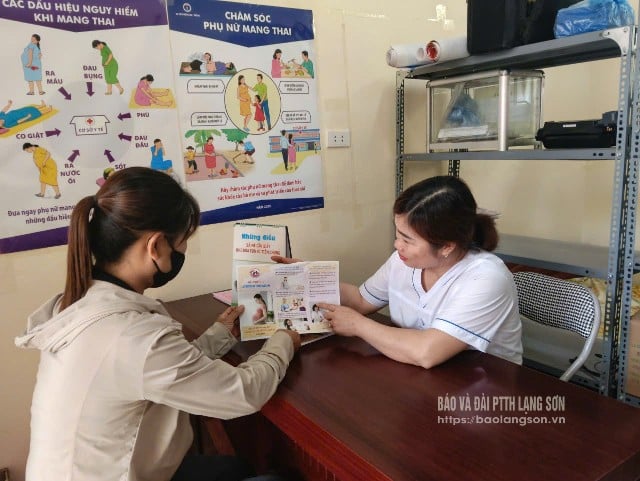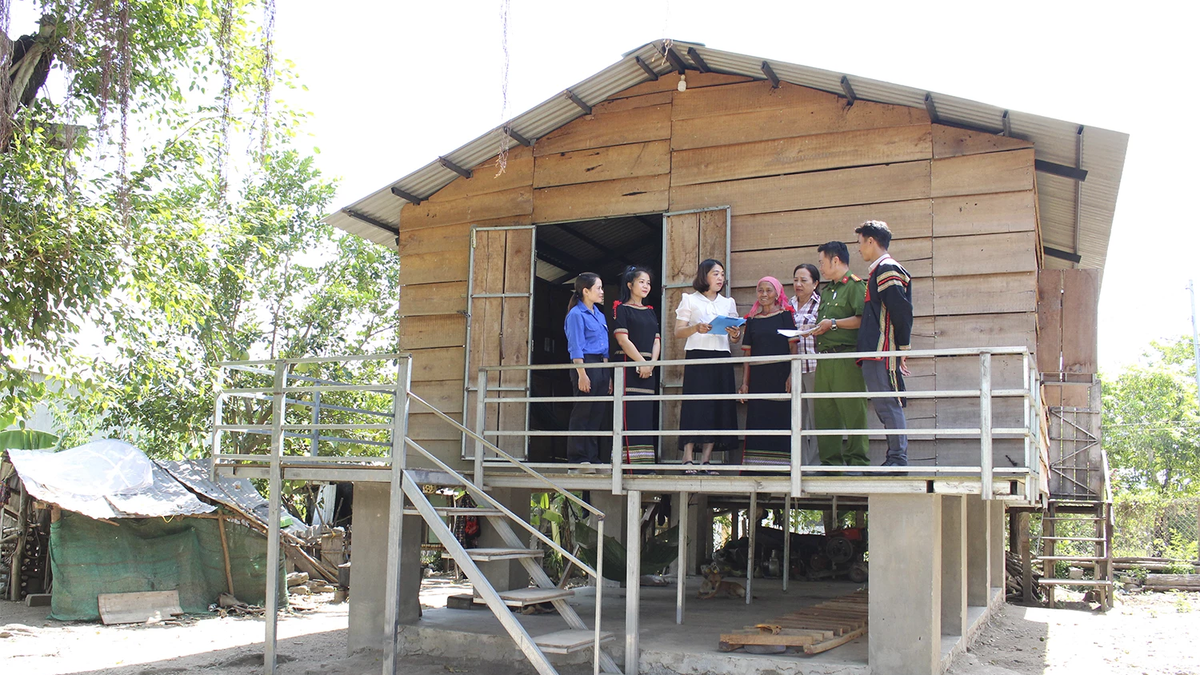- Gender imbalance at birth is a burning issue in many localities across the country. In Lang Son province, the current sex ratio at birth is high compared to the national average (the national average in 2024 is 110.7 boys/100 girls), reflecting a worrying reality of the imbalance in population structure right from the early stages of life.
According to statistics, in 2024, the province's sex ratio at birth was 112.8 boys/100 girls. Notably, in just the first 6 months of 2025, this number skyrocketed to 118 boys/100 girls - far exceeding the normal biological threshold and the national warning threshold.
Some areas recorded alarmingly high sex ratios, such as the old Huu Lung district with 124.9 boys/100 girls, the old Loc Binh district with 124 boys/100 girls, and the most serious was the old Dinh Lap district, where the ratio reached 141.5 boys/100 girls.
Ms. Le Thi Ai, a population officer of Tan Thanh commune, said: In the first 6 months of the year, the sex ratio at birth in the area was at an alarming level. Specifically, out of a total of 94 children born, 61 were boys, equivalent to 185 boys/100 girls. The main reason is that the preference for boys is still widespread. Many families, even though they already have both boys and girls, continue to have more children with the hope of having more boys. Although all levels and sectors in the commune have increased propaganda and encouraged people not to choose the sex of the fetus, the number of boys born continues to increase.
In fact, the underlying cause of gender imbalance at birth is still the ideology of "preferring boys over girls", combined with the development of modern medical services that allow for early determination of the sex of the fetus, so many people have chosen the sex of the fetus before birth. Although this behavior has been prohibited by law, in reality, this practice still secretly occurs in many places.
Along with that, the new regulation in Official Dispatch 13421-CV/VPTW of the Central Party Office issued in 2025, implementing the direction of the Politburo , cadres, civil servants, public employees and party members who have a third child will not be considered and disciplined as before, which is also creating some indirect impacts on this situation. Although this regulation partly helps people to be more open in having more children, if it is not accompanied by measures to control gender selection at birth, it will partly cause the gender imbalance rate in the area to increase day by day.
Many families, despite having both boys and girls, still decide to have more children because they want to have many children, with boys still being the priority. Ms. DTH, Hung Vu commune, shared: I don't care if I have a boy or a girl, I just want to have 3 children to make the family happy, and 2 boys would be even better. Therefore, in early 2025, my husband and I had a third child, and he is a boy.

Faced with difficulties and challenges when the gender ratio at birth remains high and difficult to control, the population agency in the province is continuing to implement solutions aimed at reducing the gender imbalance.
Mr. Phan Lac Hoai Thanh, Deputy Director of the Department of Health, said: The Department of Health has issued a document to continue to direct the implementation of population and development work in the province, including the work of reducing gender imbalance at birth. In particular, we recommend that the People's Committees of wards and communes after the merger need to strengthen the Steering Committee for the Protection and Care of People's Health, strengthen the clubs under the Project "Controlling Gender Imbalance at Birth"; maintain a stable team of population collaborators to suit the current situation; ensure uninterrupted communication work in the context of implementing two-level local government.
At the same time, health stations in communes and wards are required to actively propagate and mobilize people to have enough children, not to choose the gender of the fetus; expand modern forms of communication on digital platforms, provide information and consultation via the internet, social networking platforms that are popular with people... thereby helping people understand population policies, contributing to gradually reducing gender imbalance at birth, improving population quality in the province.
Controlling the gender imbalance at birth is not a problem that can be solved in a short time. In order for this work to be carried out effectively, it requires synchronous and drastic participation from many sides.
Specialized agencies need to promote effective and practical communication to help people clearly understand the reality and serious consequences of gender imbalance. Along with that, it is necessary to disseminate and educate the law, improve the effectiveness of implementing regulations prohibiting fetal sex selection; strengthen inspection and supervision of medical facilities providing ultrasound and prenatal diagnosis services; continue to maintain and expand programs, models and activities related to population.
In addition, it is necessary to include the content of controlling gender imbalance at birth in the school education program, village conventions and regulations, thereby contributing to changing thinking and behavior right from within the community. More importantly, people also need to raise awareness and change backward thinking about gender. Thereby, gradually reducing the gender imbalance at birth, bringing this ratio to the natural balance of 106 boys/100 girls, contributing to improving population quality and developing society in a harmonious and sustainable way in the future.
Source: https://baolangson.vn/mat-can-bang-gioi-tinh-khi-sinh-thuc-trang-dang-bao-dong-5054669.html







































































































Comment (0)